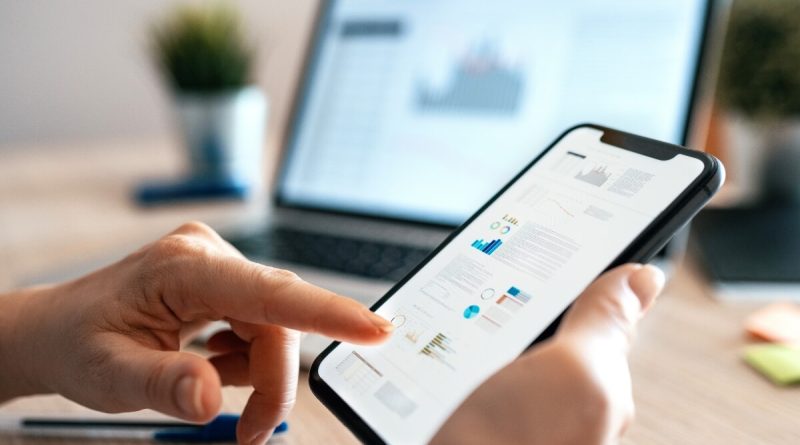The Best Free Personal Finance Apps Worth Trying
Managing personal finances can feel overwhelming, but with the right tools, keeping track of income, expenses, savings goals, and budgets becomes much easier. In 2025, there are numerous free personal finance apps that provide excellent features for beginners and experienced users alike.
This guide reviews the best free personal finance apps, including Mint, YNAB, PocketGuard, and Goodbudget, focusing on usability, features, bank integration, and security. By the end of this article, you’ll know which app fits your lifestyle and financial goals.
Summary
- Why Use Personal Finance Apps?
- How to Choose the Right App
- Top Free Personal Finance Apps in 2025
- Comparative Table: Personal Finance Apps
- How to Maximize the Use of Free Personal Finance Apps
- Practical Example: Monthly Budget Using Apps
- Tips for Choosing the Right App
- Conclusion
Why Use Personal Finance Apps?
Before diving into the apps, it’s important to understand why they are valuable:
- Track Your Spending: See exactly where your money goes every month.
- Budget Effectively: Set spending limits and savings goals.
- Automate Financial Management: Reduce errors and save time.
- Gain Insights: Understand your financial habits and improve decision-making.
Free apps provide these benefits without the need for paid software or complex spreadsheets.
How to Choose the Right App
When selecting a personal finance app, consider:
- Usability: How easy it is to navigate and input data.
- Features: Budgeting, expense tracking, bill reminders, savings goals.
- Bank Integration: Ability to link accounts securely for automatic updates.
- Security: Encryption, two-factor authentication, and data protection.
Top Free Personal Finance Apps in 2025
1. Mint
Overview: Mint is one of the most popular free personal finance apps. It links to bank accounts, tracks spending, and provides budgeting tools.
Key Features:
- Automatic transaction tracking
- Budget creation and alerts
- Bill reminders
- Credit score monitoring
Pros:
- User-friendly interface
- Comprehensive dashboard
- Real-time updates
Cons:
- Ads may appear in the free version
- Some advanced features require a premium upgrade
2. YNAB (You Need a Budget)
Overview: YNAB focuses on helping users prioritize every dollar and stick to a zero-based budget.
Key Features:
- Goal-based budgeting
- Expense tracking
- Real-time syncing
- Reports and analytics
Pros:
- Encourages proactive financial planning
- Excellent educational resources
- Motivates users to save
Cons:
- Steeper learning curve for beginners
- Free trial available, but full version is subscription-based
3. PocketGuard
Overview: PocketGuard simplifies budgeting by showing how much disposable income you have after bills, goals, and necessities.
Key Features:
- Automatic expense categorization
- Goal tracking
- Spending limits
- Bill monitoring
Pros:
- Simple and intuitive design
- Highlights how much you can safely spend
- Ideal for people who want a quick overview
Cons:
- Less detailed for complex budgets
- Some features are locked behind the premium plan
4. Goodbudget
Overview: Goodbudget is based on the envelope budgeting method, allowing users to allocate money for specific spending categories.
Key Features:
- Envelope system for budgets
- Expense tracking
- Syncs across multiple devices
- Debt tracking
Pros:
- Helps users manage money consciously
- Clear visualization of spending
- Works offline
Cons:
- Manual input required for some transactions
- Limited features in the free version
Comparative Table: Personal Finance Apps
Here’s a quick comparison of these apps based on usability, features, bank integration, and security:| App | Usability | Features | Bank Integration | Security |
|---|---|---|---|---|
| Mint | ★★★★★ | Budgeting, Bill Tracking, Credit Score | Excellent | High (Encryption + 2FA) |
| YNAB | ★★★★☆ | Goal-based Budgeting, Analytics | Good | High (Encryption + 2FA) |
| PocketGuard | ★★★★★ | Spending Limits, Goal Tracking | Good | High (Encryption) |
| Goodbudget | ★★★★☆ | Envelope Budgeting, Debt Tracking | Limited | High (Encryption) |
How to Maximize the Use of Free Personal Finance Apps
- Set Clear Financial Goals: Define short-term and long-term goals before using the app.
- Link Accounts Safely: Ensure your bank accounts are securely linked.
- Track All Expenses: Don’t leave cash transactions unrecorded.
- Review Regularly: Check your spending and progress weekly or monthly.
- Combine Apps if Necessary: Sometimes using two apps (one for budgeting, one for savings goals) works best.
Practical Example: Monthly Budget Using Apps
Here’s how a family might use these apps to manage a $3,500 monthly budget:| Category | Budget ($) | App Suggested | Notes |
|---|---|---|---|
| Rent/Mortgage | 1,200 | Mint | Track bills automatically |
| Groceries | 500 | PocketGuard | Set spending limits |
| Utilities | 300 | Mint | Receive bill reminders |
| Savings & Investments | 700 | YNAB | Goal-based tracking |
| Entertainment & Dining | 300 | PocketGuard | Monitor discretionary spending |
| Debt Repayment | 500 | Goodbudget | Allocate funds to specific debt envelopes |
| Miscellaneous | — | Goodbudget | Flexible envelope |
Tips for Choosing the Right App
- Beginner Friendly: Mint and PocketGuard are best for users who want automation and simplicity.
- Goal-Oriented: YNAB is ideal for users who want to prioritize savings and financial goals.
- Hands-On Budgeting: Goodbudget is perfect for those who like to actively manage each dollar.
- Security Focused: Always check encryption standards, two-factor authentication, and privacy policies.
Conclusion
Free personal finance apps in 2025 provide powerful tools for managing money, tracking spending, and achieving financial goals. Whether you prefer automatic tracking (Mint, PocketGuard), goal-based budgeting (YNAB), or envelope-style budgeting (Goodbudget), there is a solution for every style.
Start small, pick one app, and gradually incorporate others if necessary. Consistency and review are key to mastering personal finance without stress.

